As an Amazon Associate I earn from qualifying purchases.
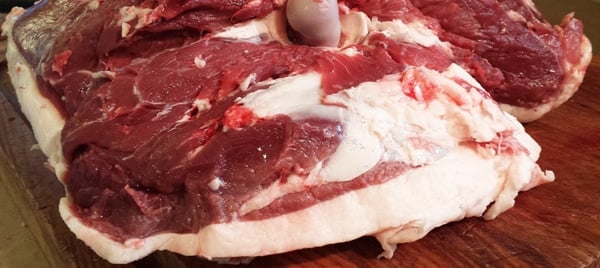
I’ve long been a proponent of using deer fat in cooking. In fact, it’s one of my more favorite hunting myths to puncture when I talk to other hunters about game cookery. After all, it just makes sense that the fat on venison would taste good, especially if you are hunting either in the Grain Belt or wherever there are a lot of acorns: Most of us like the taste of grain-fed beef, and acorn-fed pork is some of the finest in the world.
Still, the majority of sources on the subject will tell you to remove any and all fat from your deer, calling it gamy or “strong” or otherwise unpleasant. Even the normally sporty The L.L. Bean Game and Fish Cookbook, which I respect a lot, says venison fat is gnarly — but, oddly, that moose and caribou fat isn’t. Some critics skip the flavor aspect altogether and stress how quickly venison fat goes rancid, even in the freezer.
There has to be something to this, right?
Turns out, there is — to both sides of the deer fat debate. Here’s what I know about the science and composition of fat in venison, and hopefully this will help you decide whether you want to keep the fat on your deer or trim it off.
Let me start with the obvious: Deer, elk, antelope, caribou and moose are all separate critters, with different diets among species compounded by both regional differences — the menu for an Arizona cous deer is nothing like that for an Iowa white-tailed deer, for example — as well as individual differences; one buck may love acorns, while the one eating next to him prefers grass. Given this, any universal ideas about the flavor or composition of deer fat should be taken with a grain of salt. Being wild, variability is the name of the game.
Nevertheless, all our “deer” are cervids, ruminant cousins of sheep, goats and cattle. And ruminants tend to have a narrower range of flavor differences than do animals with a less intense digestive system and/or a wider diet.
Ruminants all eat grass, other plants, nuts, and only rarely animal protein; there’s that oft-quoted story about deer eating baby birds or eggs. Contrast that with ducks and bears and wild pigs, which can run the gamut from abominable to sublime depending on what they’d last been eating. A salmon-eating bear is foul, a berry-eating one fantastic. Deer are deer, with real but more subtle differences in flavor.
OK, you’ve shot a deer. Now what?
First off, when you gut the deer you will see a skein of lacy fat surrounding its entrails; this is caul fat, and it is fantastic for making crepinettes or British meatballs. (More on that in another post.) I save it, vacuum-sealing it and freezing it straight away.
Next you will often see a lot of fat around the kidneys as well as some stuck here and there within the gut cavity. This is suet. I tend to toss it. Why? Rule No. 1: Body cavity fat (suet) is always harder than that on working muscles. If you are a soap or candle maker, this stuff is golden. If you want to eat it, well, it’s really waxy and won’t melt until it hits about 120°F.
By comparison, rendered wild duck fat melts around 68°F. Some people like beef and lamb suet, but not me. Birds really love it, though, especially in winter. So if you live in a place with cold winters, save your deer suet for them.
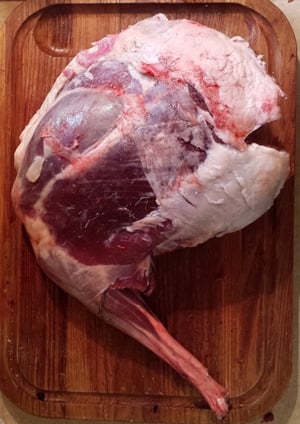
Question: Are you hanging your deer or not? This is a big one. If you intend on hanging your deer in the hide, you can still use the fat. Not a lot of people do this because it requires very cold temperatures. If, like most people, you hang your deer after it’s been skinned, you probably want to trim off at least top layer of fat. The reason why gets us into what venison fat is made of.
Good data is hard to find on this subject, but it does exist. I managed to read about a dozen scientific papers on venison fat — yeah, I know, light reading, right? — mostly from New Zealand, Scandinavia and Great Britain, although there were a few from the United States, too. They all come to the same conclusion about deer fat:
- It is high in Omega-3 fatty acids, due mostly to a diet of grasses.
- It may have the highest levels of stearic acid in any food animal, for reasons not entirely clear.
- Deer fat is more saturated than fat from beef, lamb or pork.
Saturated fat is bad, right? Yes, but the kind most people are talking about is palmitic and myristic acid, which are present in all ruminants, including deer. As it happens, stearic acid is an anomaly. Diets high in stearic acid actually decrease the “bad” cholesterol levels in people and may even increase the “good” cholesterol, too.
At the very least it’s cholesterol neutral. Beef has some stearic acid, lamb more. But you know what has even higher levels of it? Chocolate. Crazy, eh?
So, back to the question of hanging your deer. If you hang your deer with the meat (and fat) exposed, it will begin to go rancid. The reason has to due with temperatures above freezing, exposure to the air, which causes oxidation, and because fats high in omega-3 fatty acids tend to go rancid easier. This is why people say venison fat goes rancid quickly.
The quicker you can cool the deer carcass and the faster you can get the meat away from oxygen and into refrigeration, the better tasting the fat will be, and the longer it will keep in storage.
A word on taste. Flavor in deer fat is all about meat care, which we just discussed, and diet. A deer that had been pillaging an alfalfa field or a cornfield will have fat that tastes a lot like beef or lamb fat. A deer eking out a living in the Great Basin or the desert might not have any fat at all, and what fat there it may well taste unpleasant. How can you tell? Render some in a pan with a little water, and if it smells good it is good. Your nose doesn’t lie.
That said, fat is the primary carrier of individual flavor in animals, not lean meat. I can feed you a series of meats, and if they are all cooked the same way and are all devoid of fat, they’ll all taste similar. Color and texture are your only clues, and if you blindfold someone it will become virtually impossible to tell the difference. Don’t believe me? Try it on your friends. You’ll be surprised.
Venison fat has flavor. There, I said it. If you like the flavor of lamb or beef fat, you’ll like venison fat. Period. Others might find it too strong for them. And that’s fair, but I am betting it isn’t the flavor of the fat that’s got them. It’s the mouthfeel.
And this brings us to the final issue with deer fat: It can coat your mouth.
Blame that stearic acid. You know why you love chocolate so much? One big reason is because that lovely flavor coats your palate. Only when it’s deer fat the experience is something else entirely, and not altogether pleasant. A little is fine, largely because it carries that nice venison flavor.
But when I make sausages from 100 percent venison, they taste fantastic but I find I need to drink something acidic, like red wine, to cut that coating. Is it a stopper? No. But it’s something to be aware of.
So. Bottom line. If you want to eat your deer fat, I’d follow these guidelines:
- Save it from deer that had been eating nice grasses, grains or acorns. Remove it in deer from sagebrush or sketchy areas.
- Toss the suet unless you want to make candles, soap or feed the birds.
- Slice off any fat that was exposed to air after you’ve hung the carcass.
- Never use deer fat in dry-cured salami. Uncooked deer fat is nasty and chalky.
- Use deer fat sparingly in sausages and burger. A little adds a lot of flavor, a lot can give you that “coated mouth” thing
- Eat cuts with a lot of venison fat, burger or sausages made with venison fat within 3 to 6 months, as the fat will go rancid slowly even in the freezer; it’s a little like salmon fat, which, when thawed, gets that nasty smell we all hate…
- Venison fat crisped on a roast or steak is awesome. Period.
Hope this helps you out this deer season! What have your experiences been with deer fat?
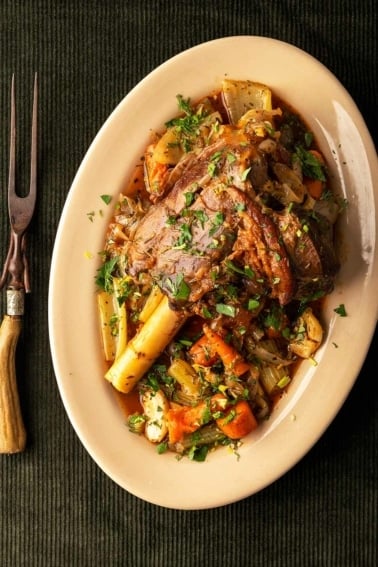
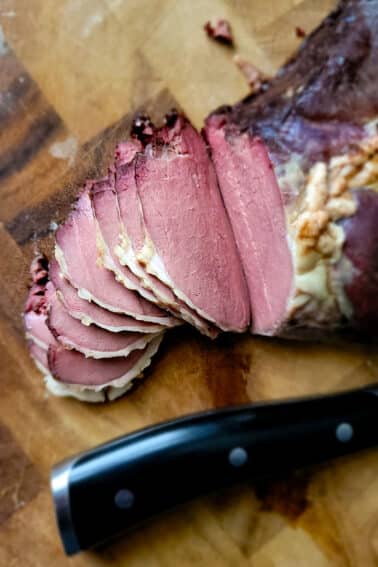
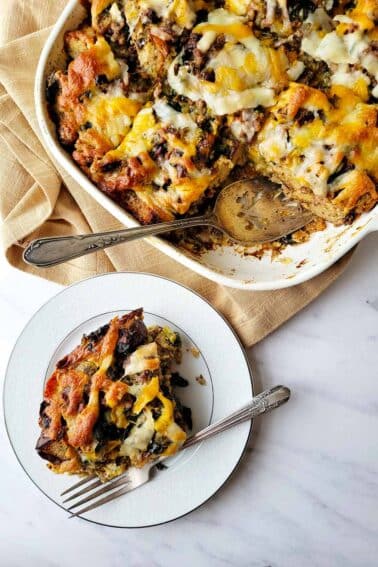
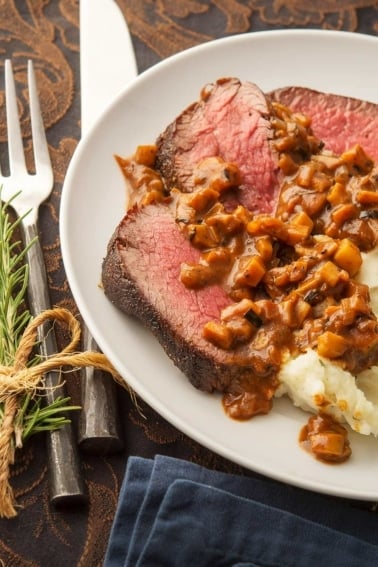
I’ve been hunting deer for a over a decade now, and I haven’t had a lot of experience with deer fat because I typically break the deer down into muscles and don’t take a lot of fat with it. Recently, I started taking (from larger deer) flank sections…first thinking I’d try some kind of carne asada, but today, I just ground it up to make a smoked meatloaf. There was a lot more fat than I normally encounter. And wow, you are sure right about the mouthfeel! Flavor is great, but I might need to dilute this cut with something else because it’s a pretty strong coating sensation that I don’t love. I read this article when I was getting started and just now experienced what you were talking about!
I love reading your writtings. They help me so much.
This is such a useful article. Thanks so much for writing it.
We make tallow from the waste in our small venison business and having to learn more about it. Currently I’m cooking with it, and getting along pretty well.
A friend of mine, while butchering deer, vacuum sealed a piece of venison back fat 4 years ago and put it in the freezer after smelling and tasting it. He labeled it “Chad’s Fat”. The deer had been eating lots of acorns. It basically had no flavor or odor, like chewing wax. This year I pulled it out and repeated the smelling and tasting, including frying up a piece, like bacon. Raw, it was odorless and tasteless, just as four year prior! Also, when fried, it smelled good and tasted good, especially with a little salt. I was astonished. So, the moral of the story? Oxygen is the enemy, not the deer fat.
Very interesting article, thank you! I am using some rendered deer fat for soapmaking; I suspect the kidney fat was mixed in with the rest of the fat. It has an odour that I try to cover with essential oils as deer tallow isn’t my favourite soap scent. I was surprised to learn that deer tallow has a very high melting point, it wanted to start solidifying even after I added the lye to the oils. I will have to soap hotter than usual next time, or end up with soap that goes rancid!
Dave, I love information like this, but I am still skeptical about it. When I was young (around 15) and first getting into hunting with my father, he shot a nice buck and decided to butcher it himself (even though he had no idea what he was doing lol). He kept the ribs and my mother prepared them for dinner one night for my family (6 of us). She slow cooked them like she would with pork or beef ribs and let me tell you, the meat was delicious and tender, but god the fat was rough. This was our first experience with the intense mouth-coating from deer fat. I have trimmed the fat ever since.
However, thanks to your article, I may begin to experiment with deer fat once again to see if I can get it to be as wonderful as you claim it to be. I made a neck roast for the first time last fall, and it turned out very good, although still had a slight mouth coat near the end of the meal. Nothing like my first experience, but still present. Hopefully better results to come!
We rendered 2 quarts from Wisconsin white tails and use this for our Au poivre steak preparation, pan fried burgers etc. We love the results!
Also – if you like duck fat potatoes, try deer fat. You will not be disappointed. We will be saving our whitetail fat every time.
A few seasons back I saved about 5 lbs of fat from one very fat doe to see for myself if it deserved the bad reputation it has. I thought I’d try it on some fresh caught puppy drum fillets and the deer fat in a hot skillet and let me tell you the combo was the proverbial,” To die for!” Fantastic! Excellent taste! I then saved the rest to use to fry my eggs and my ground venison burger! It lasted quite a while and lowered my food bill, I somehow didn’t continue saving the deer fat but now have a re-newed enthusiasm to try it again after discovering your great website and reading Mariah’s above notes on rendering the fat. Wonder what that would do. I did not render the fat when I fried the fish or eggs and it was great
The skinny end of the backstrap up under the shoulders tends to be fatty and when frying it up I find it is delicious. I feel like it was going against everything I was taught about venison processing. I normally age my deer, skin on in a walk in cooler. lately I have been ageing in a cooler on ice. I will keep and use more fat in my processing and cooking.
I want to make REAL mincemeat and don’t want to use beef suet.
Were beeves even available when mincemeat was even first made?
How do I find a true recipe that isn’t incorporating modern equivalents or items not available originally?
Anyway, I do NOT like the flavor of beef fat, but love venison. Do I use the kidney fat? or will fat from other areas of the deer body work?
Thanks for sharing this information and opinions. I have always made ground venison in two styles; with and without the fat added. Venison burger’s over charcoal are notably better with the fat added, and taco’s are much better with the lean mix. Your comment on using a little is spot on, great taste, but not too much to glue the mouth shut 😉
Great write up. It’s definitely a topic that isn’t discussed frequently, or with more opinion than science.
Can you share some of your sources of your wealth of information, especially the scientific articles?
Check Google Scholar. When I first wrote this it was totally annotated, but the URLS keep changing on the studies, for reasons I am not clear on, so those links get broken all the time. But I usually use Google Scholar to read up on this sort of thing. Use things like “stearic acid” or “cervids” for keyword searches.
Have you used venison fat for true pemmican? I know your Pemmican-style Ground Meat Jerky uses bacon fat, but I’m wondering how venison tallow would fare in actual pemmican bars, especially if the pemmican was to be stored for a longer period of time. Thanks for the help and keep up the great work!
David: I have not, because venison fat is extremely waxy. Most people don’t like the mouthfeel of it. But it’s perfectly edible, and you could give it a go to see if you like it.
I use rendered venison fat for my pemmican. It solidifies at lower temperatures and creates a fantastic pemmican!
I form the hot pemmican mixture into a shallow depth square/rectangular block on a sheet of parchment paper, put in the freezer to cool down then slice into useable sizes to take out in the field. I do store it in snack-size ziplock bags (not at all traditional!) and keep it in the freezer until we need it.